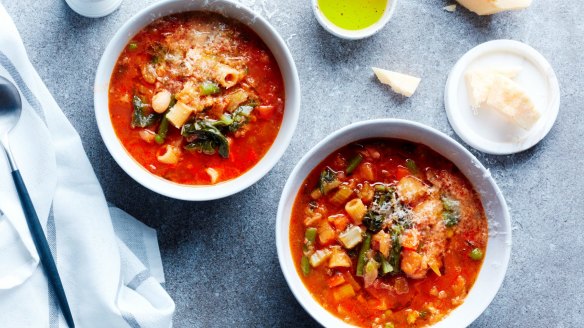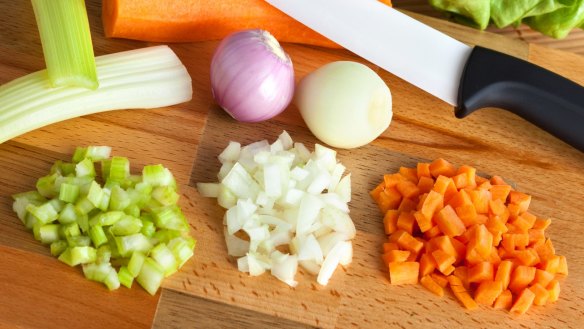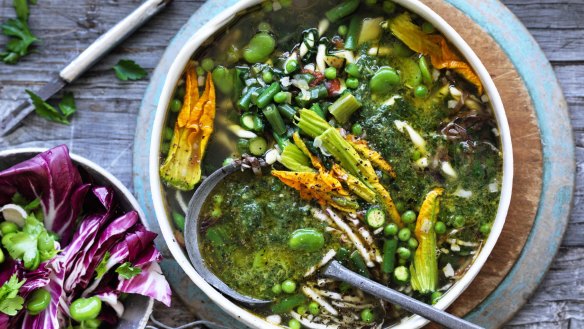Minestrone is the tastiest way to spring clean your kitchen

The Italian word "minestrone" derives from the verb minestrare (to serve), which is the origin of minestra, a hearty, multiple-ingredient soup. Pair this with the Italian suffix -one (big), and minestrone literally means a big, hearty soup. That's amore.
Traditional minestrone ingredients differ from region to region. In Tuscany you might find it with kale and cannellini beans; in Liguria it's seasoned with pesto; Milanese add rice to the pot; while Sardinians use fregola, a small pasta similar in shape to pearl cous cous.
But recipes also change based on the season – minestrone can be adapted to whatever is fresh at the market to whatever's been neglected in the depths of your fridge bottom drawer. Minestrone is the ultimate kitchen sink recipe – just use whatever you've got.
Here are some spring-cleaning tips to inspire your next big, hearty soup.

A super soffritto
Meaning "almost fried", the soffritto forms the base of many Italian dishes. The tangle of finely chopped ingredients is gently fried until soft and aromatic. This technique sweats the vegetables, coaxing out sweet and umami flavour from them. The soffritto is also your chance to use up some of those lacklustre veg in the crisper – soft celery stalks, abandoned onion halves and old carrots work perfectly here. Fennel bulbs, parsley stalks, capsicum, leeks and garlic can also be added if that's what you have. The soffritto is usually cooked in olive oil, but if you have a knob of butter that needs using up, it's all gravy, baby (well, it's all soffritto, baby).
Pick your thickener
Bulking up your minestrone is as easy as opening the pantry door. Got a spare can of cannellini beans? Throw them in. Have an annoying amount of short pasta left in the bag? Use it here. You can add rice, macaroni, broken up bits of spaghetti, chickpeas, borlotti beans, risoni, quinoa… all carbs are welcome.

A variety of veg
The origins of minestrone are said to go back to Ancient Roman times, coming to existence during a period of economic growth when a greater range of vegetable started to become available at the markets. When in Rome, do as the Romans do, so add in whatever veg you have available to you. In winter, when all the ugly veg are cheap and plentiful, roast turnip, kohlrabi, celeriac and parsnips. Pumpkin adds sweetness, potato adds bulk. Some people wince at minestrone after being scarred from too many overly acidic tomato tin-based ones. Don't like tomato? Don't add it! Make it a spring greens minestrone filled with chopped parsley, spinach leaves, asparagus, peas, green beans, broad beans and broccolini.
Secret ingredients
You probably have a secret flavour booster in your fridge right now. Parmesan rinds are gold and should be hoarded. Parmesan rinds do not have a wax coating so can be thrown into a soup stock to add rich salty flavour, the perfect, savoury umami boost. Other tips: use pancetta or streaky bacon in your soffritto instead of oil, toast stale bread and grill it with parmesan for a cheesy crouton, or do as the Ligurians do and top it with basil pesto. Level up by adding mozzarella-stuffed meatballs.